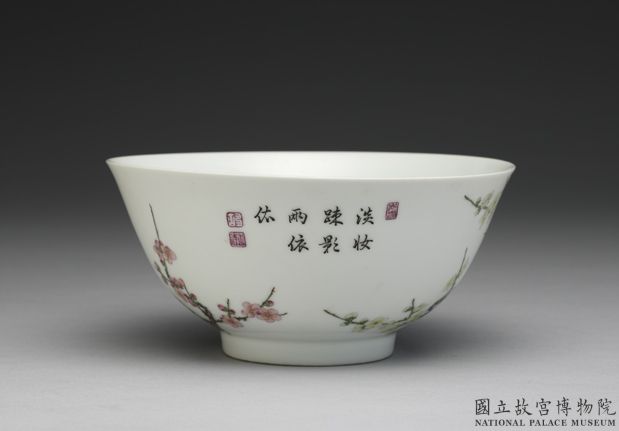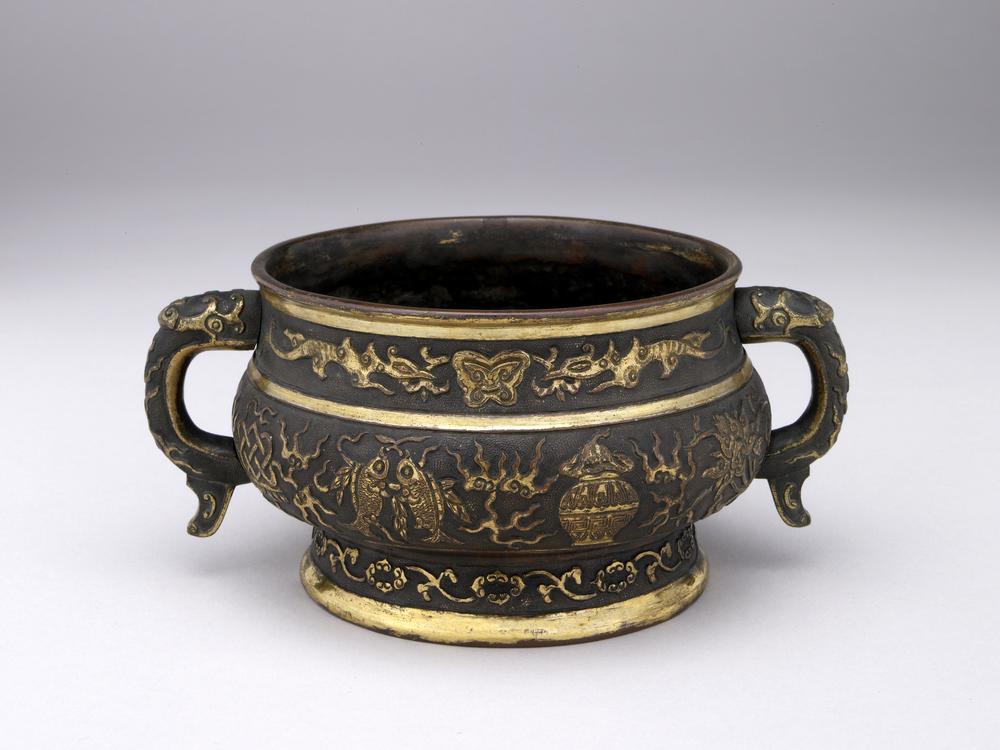Period:Unknown Production date:10thC-12thC
Materials:jade
Technique:carved, pierced, polished,
Subjects:mammal (hare) moon plant
Dimensions:Height: 7.40 centimetres Width: 4.70 centimetres
Description:
Decorative plaque of pale yellow semi-translucent jade with white inclusions of a hare gazing at the moon sitting amongst rockery and lingzhi plants carved in high relief with pierced work.
IMG
![图片[1]-plaque BM-2022-3034.215-China Archive](https://chinaarchive.net/Unknown/Jades/658_.jpg)
Comments:The reverse side is undecorated and uneven. The piece polished to a good gloss. Jin/Sung. JR: Liao or Jin dynasty, 12th-13th century. This rectangular plaque is rounded at the top, forming a rocky mountain shrouded in clouds. At the foot, a large crouching hare, with his head turned up, looks backwards over his shoulders, gazing at the moon. In front of him are large lingzhi fungi. The carving is deep and decisive, and the rounded surfaces of the hare are smoothly polished. The reverse of the plaque is undecorated and uneven. The hare and the moon have long associations. Zhang Hua (332?-300) writes in the Bowu zhi, a compendium of early medieval knowledge including topics such as geography, topography, botany, local folklore and legend: “A hare licks its fur, gazes at the moon, and then conceives. Hares spit out their young from their mouths”. Other earlier accounts refer to the hare pounding the elixir of immortality on the moon. Pictorial plaques with auspicious associations probably developed gradually from the Tang dynasty belt ornaments. A particular type of plaque, which is traditonally associated with the Liao dynasty, shows either small falcons in pursuit of swans, or deer with tigers. The compositions are known as chun shui for the swan and falcon, and qiu shan for the deer and tiger. Such plaques celebrate the regular spring and autumn hunts by the Khitan peoples of the Liao dynasty. Formal celebrations of these hunts were, however, probably Chinese in manner and go back at least to the Han dynasty. It is said that the Liao emperor himself would preside, and the officials in attendance wore robes decorated with pictorial emblems of the hunt, the same emblems as are probably reproduced on the jades. The subject of the swan and the falcon, sometimes called the haidongqing, theme, was particularly popular. The swan is usually shown fleeing among water plants chased by a tiny falcon, but in many of the depict ions the falcon is omitted as on a later example in the British Museum. In all these examples a design on a small jade is being used to encapsulate and recall both a simple auspicious phrase and all the notions and activities brought to mind by the words If the dates in the Liao, Jin and Yuan that are given to these pieces are correct, they are among the very first examples of the use on jades of pictorial formulae to illustrate words and phrases. Further, they are also the first pictures in jade that include landscape settings for creatures, as opposed to just the creatures, and as such they mark the beginning of the practised of using jade to present pictures. See Rawson 1995, p. 335, cat.no.25:11.
Materials:jade
Technique:carved, pierced, polished,
Subjects:mammal (hare) moon plant
Dimensions:Height: 7.40 centimetres Width: 4.70 centimetres
Description:
Decorative plaque of pale yellow semi-translucent jade with white inclusions of a hare gazing at the moon sitting amongst rockery and lingzhi plants carved in high relief with pierced work.
IMG
![图片[1]-plaque BM-2022-3034.215-China Archive](https://chinaarchive.net/Unknown/Jades/658_.jpg)
Comments:The reverse side is undecorated and uneven. The piece polished to a good gloss. Jin/Sung. JR: Liao or Jin dynasty, 12th-13th century. This rectangular plaque is rounded at the top, forming a rocky mountain shrouded in clouds. At the foot, a large crouching hare, with his head turned up, looks backwards over his shoulders, gazing at the moon. In front of him are large lingzhi fungi. The carving is deep and decisive, and the rounded surfaces of the hare are smoothly polished. The reverse of the plaque is undecorated and uneven. The hare and the moon have long associations. Zhang Hua (332?-300) writes in the Bowu zhi, a compendium of early medieval knowledge including topics such as geography, topography, botany, local folklore and legend: “A hare licks its fur, gazes at the moon, and then conceives. Hares spit out their young from their mouths”. Other earlier accounts refer to the hare pounding the elixir of immortality on the moon. Pictorial plaques with auspicious associations probably developed gradually from the Tang dynasty belt ornaments. A particular type of plaque, which is traditonally associated with the Liao dynasty, shows either small falcons in pursuit of swans, or deer with tigers. The compositions are known as chun shui for the swan and falcon, and qiu shan for the deer and tiger. Such plaques celebrate the regular spring and autumn hunts by the Khitan peoples of the Liao dynasty. Formal celebrations of these hunts were, however, probably Chinese in manner and go back at least to the Han dynasty. It is said that the Liao emperor himself would preside, and the officials in attendance wore robes decorated with pictorial emblems of the hunt, the same emblems as are probably reproduced on the jades. The subject of the swan and the falcon, sometimes called the haidongqing, theme, was particularly popular. The swan is usually shown fleeing among water plants chased by a tiny falcon, but in many of the depict ions the falcon is omitted as on a later example in the British Museum. In all these examples a design on a small jade is being used to encapsulate and recall both a simple auspicious phrase and all the notions and activities brought to mind by the words If the dates in the Liao, Jin and Yuan that are given to these pieces are correct, they are among the very first examples of the use on jades of pictorial formulae to illustrate words and phrases. Further, they are also the first pictures in jade that include landscape settings for creatures, as opposed to just the creatures, and as such they mark the beginning of the practised of using jade to present pictures. See Rawson 1995, p. 335, cat.no.25:11.
© Copyright
The copyright of the article belongs to the author, please keep the original link for reprinting.
THE END





